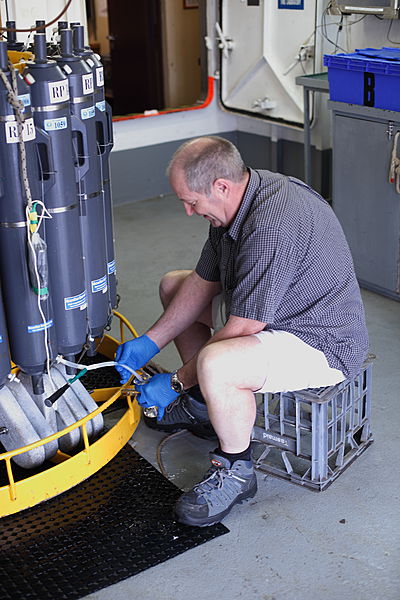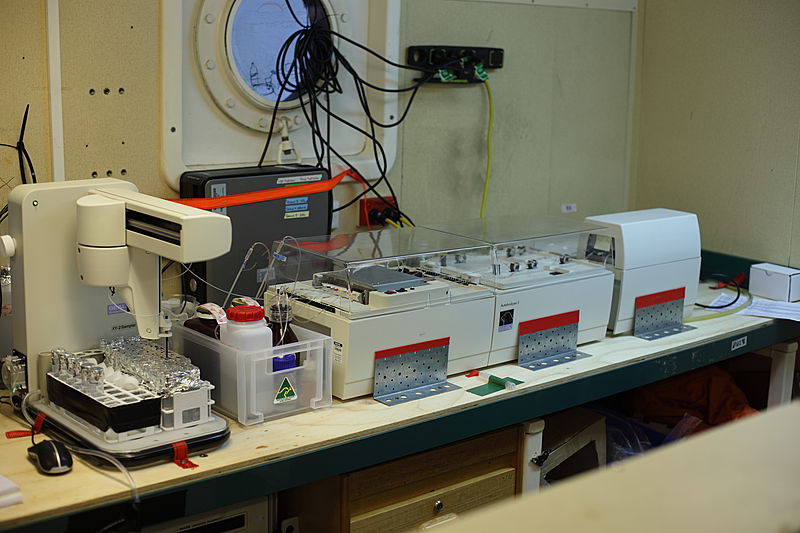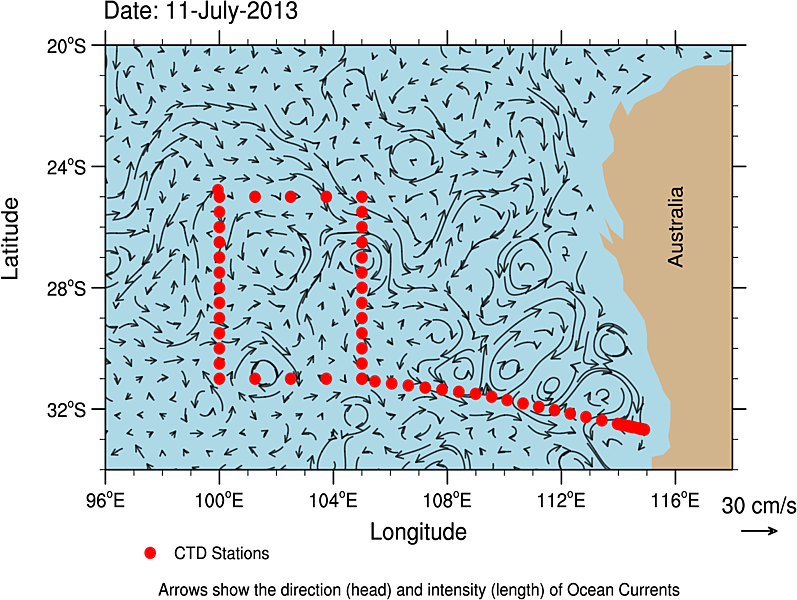Onboard Southern Surveyor, the Hydrochemistry Group is responsible for the chemistry analysis.
CSIRO Marine and Atmospheric Research support staff onboard Southern Surveyor (l to r) Mark Rayner, Sue Reynolds, Dave Terhell and Peter Hughes.
An instrument called a CTD, which measures conductivity, temperature and depth, is lowered over the side of the ship when it’s stationary, to take water samples. The CTD has some electronic probes on it that can measure different things, such as saltiness of the water, temperature and the oxygen content. The CTD is lowered through the water column, to within a few metres of the ocean floor.
The CTD also has a number of water bottles attached to it, that can be remotely operated from onboard the ship, to take samples of water at specific depths. 
The samples are analysed to determine the concentration of salts, oxygen and nutrients in the water at different depths. The nutrients that are being analysed are nitrates, phosphates and silicates. These are the same nutrients that are found on land in any garden and are just as important to marine ecosystems as they are to land based ecosystems.
This information can be used by biologists to see the quantity of nutrients that are available for the micro organisms in the water. The nutrients are at the bottom of the food chain and are essential to all life cycles that occur in the ocean. Nutrients are consumed by lower plant form such as algae which in turn are consumed by organisms further up the food chain.
However, on this voyage into the Indian Ocean, this information is used by oceanographers to track large currents, and to identify particular water masses, using the different concentrations of nutrients.





